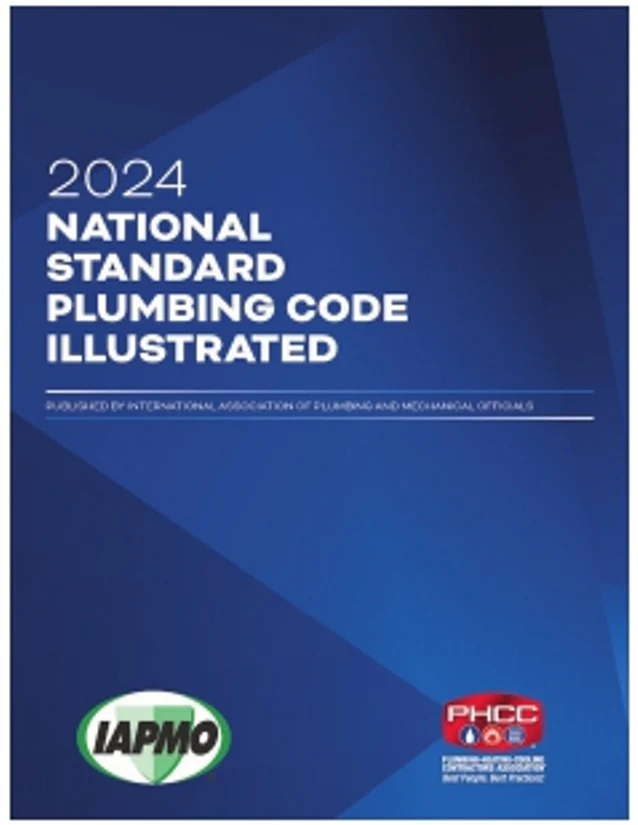Insurers Spend Millions To Boost Code Enforcement
So it is not only in the PHC industry but throughout the construction trades. Property insurers believe that slack code enforcement has cost them literally billions of dollars in catastrophic losses.
As a result, in 1995 the insurance industry mounted a five–year program to shore up building code enforcement throughout the nation. They are concerned primarily about structural codes that make sure buildings can withstand hurricanes and earthquakes, though plumbing-heating-cooling system standards also stand to benefit from this scrutiny.
Rude Awakening: Insurers got the hell kicked out of them by 1992’s Hurricane Andrew, which produced a record $15.5 billion in insured property losses, and who knows how much uninsured damage. According to Chris Guidette of New York-based Insurance Services Office (ISO), in their entire 50 years of selling policies in Florida, Allstate Insurance Co. had not collected enough premiums to pay for its losses incurred in one night by Andrew’s puffing.
Yet investigators noticed that one subdivision might be utterly devastated while a similar one just across the road sustained only light to moderate damage. Construction quality made the difference. South Florida’s building codes were judged to be fine. It’s just that many homes were built out of code. Insurers estimated that a quarter to half of their $15.5 billion payout might have been preserved if building codes had been strictly enforced.
Hot on the heels of Andrew, the insurance industry again got clobbered in 1994 with the $12.5 billion Northridge earthquake in Southern California. Once again, code enforcement was found wanting.
Most worrisome is that many climatologists believe that global weather patterns have brought us into an era of devastating hurricanes, which are the costliest natural disasters faced by insurers. Windstorms account for almost 80 percent of the insurance industry’s catastrophic losses, and ISO says that more than half the U.S. population now lives in areas prone to windstorms.
Earthquakes rank second in cost, and 90 percent of our population lives in seismically active areas. Seismologists have been warning for decades that it’s just a matter of time before the San Andreas Fault unleashes “The Big One” on Southern California. They also have nightmares about the New Madrid Fault in southeast Missouri, which in 1811 triggered the strongest quake ever to hit the U.S. mainland, ringing church bells as far away as Boston. BCEGS: ISO is a non-profit corporation that develops data and programs for some 1,500 insurers and insurance regulators. In response to the recent catastrophes and expectations of more to come, ISO has developed an ambitious multi-million dollar program to grade the effectiveness of our nation’s building codes.
Their Building Code Effectiveness Grading Schedule (BCEGS) was begun in 1995 and is scheduled to run through the year 2000. A 650-member field force will evaluate the building codes in almost every municipality nationwide and rate their effectiveness in the following areas:
Administration of codes. This includes building code editions in use, modification of the codes, zoning provisions to mitigate natural hazards, training and certification of code enforcers, incentives for outside education, building officials’ credentials, contractor/builder licensing and bonding, public awareness programs and participation in code development and appeals.
Review of building plans, i.e., staffing levels, qualifications, detail of plan review, performance evaluations and review of plans for one- and two-family dwellings, multi-family dwellings and commercial buildings.
Field inspections, including staffing, qualifications, detail of inspections, performance evaluations, final inspections and certificates of occupancy.
Communities will be evaluated on a scale of 1 to 10, with 1 representing maximum enforcement of a model building code or local building code, and 10 signifying no recognized protection. Reevaluation is planned every five years.
Assigned grades will correlate with an insurance industry multiplier, which most insurers are expected to adopt. The better the grade, the less home and commercial building owners in a particular community will have to pay in property insurance.
Any community with a classification other than “1” will have powerful incentives to improve, beginning with the prospect of reduced loss of life and property, along with reduced economic and social disruption caused by catastrophes. Also, political pressure will be brought to bear on local public officials to shape up code enforcement in order for constituents to enjoy lower property insurance rates.
Long-Term Payoff: Nobody expects an immediate payoff. BCEGS is a long-term program designed to lower insurance exposure gradually. It is modeled after the ISO’s long-standing fire protection classification system, which assesses municipal fire departments and water supplies.
The fire-protection program, dating back to 1916, was an insurance industry response to fire losses. It has been a fundamental factor in developing insurance premiums ever since.
One difference is that the quality of a community’s fire department and water supply affect the potential risk to all structures in that community. BCEGS ratings will apply only to new construction, covering structures built after BCEGS came into being. Nonetheless, insurers are confident that over time the program will reduce property damage and save lives.
According to ISO, municipalities and taxpayers will not incur any costs associated with BCEGS. All of the costs of the evaluation process will be borne by the insurers, who will pay ISO for the information delivered by the program. ISO won’t reveal the overall cost of implementation, though PHC Profit Report has managed to peg it at somewhere in the seven-figure range.
Good For The Industry: PHC Profit Report believes BCEGS has the potential for giving a shot in the arm to all construction-related industries. Too many licensing boards and code enforcement agencies are nothing but toothless bureaucracies. I’ve heard many dedicated PHC contractors say they’d be better off if licensing were done away with altogether. This cynicism is becoming widespread throughout the industry. We can cross our fingers that BCEGS may help put a stop to it by creating an incentive for jurisdictions to professionalize their code-license-inspection systems.
Looking for a reprint of this article?
From high-res PDFs to custom plaques, order your copy today!





